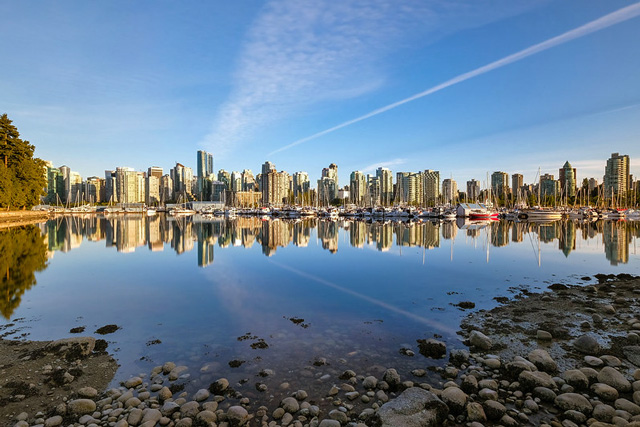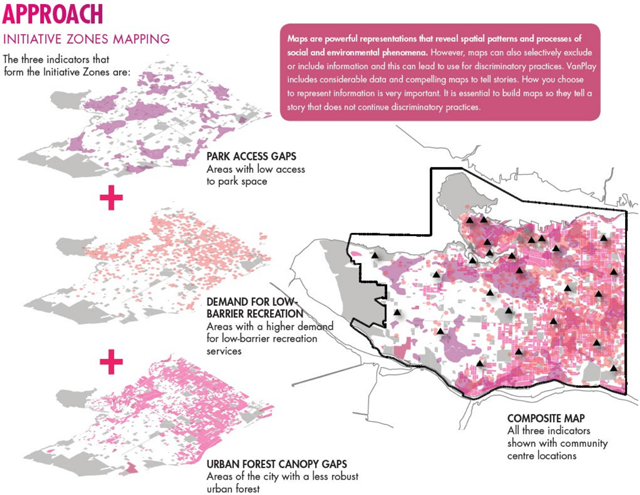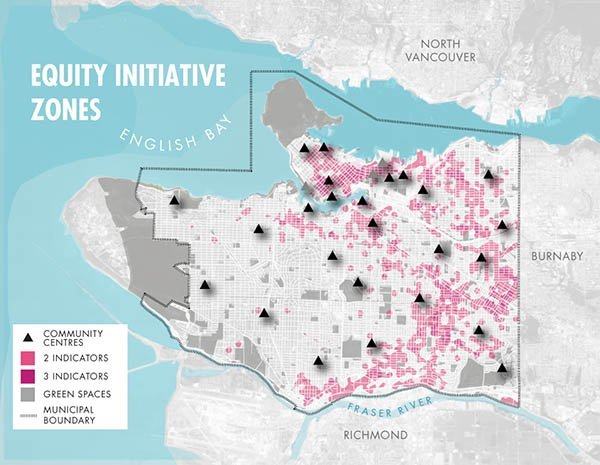
Throughout the COVID-19 pandemic, we have been told to stay at home, stay close to our neighborhoods and try to enjoy being outside. But what if there is no park nearby? What if your home is tiny with no outdoor space and limited light? What if your community is the people you meet through sport or at your local community center?
Lockdowns and stay-at-home orders have highlighted not only the value of green open spaces in crowded cities, but the inequities in distribution of those spaces.
Equity in urban green spaces goes beyond the pure amount of park space available. It’s also about how welcome people feel, the quality of that space and the quality of access to it – if the routes to these parks are safe, for example, and if they are accessible by public transit and bikeways.
It is critical that city planners and builders focus on reducing those inequities both through COVID-19 recovery efforts and in long-term planning policy. A newly launched comprehensive citywide master plan for provision of parks and recreation in Vancouver is a test case for doing things differently.
Equity Mapping
Parks and open spaces are in more demand than ever. British Columbia’s parks have seen an average of 40-50% more visitors than would be typical at this time of year. The spotlight is on these spaces in a way that it never has been before.
It’s important to note the distinction between “equality” – everyone is assumed to benefit equally from the same supports – and “equity” – everyone receives the support they need in order to enjoy equal benefits. For example, some neighborhoods need more park space than others to have the same feelings of access.
One method to support decision-making that produces more equitable outcomes is identifying priority zones for additional investment– areas where planners should look first to locate new amenities, park space, programming and services. Over time, by directing effort to these areas, provision of services will become more equitable.
These equity maps start a conversation. For example, should the annual budget allow for five park renewal projects, planners can use the map, alongside maintenance and service demand considerations, to identify the five most in need. Planners and landscape architects can then engage with residents to determine what those particular parks need to thrive alongside their unique communities.
With this in mind, the City of Vancouver’s Board of Parks and Recreation – the only elected body of its kind in Canada – developed VanPlay, a comprehensive new citywide master plan for provision of parks and recreation with equity mapping at its core.
Addressing Systemic Problems
Like many cities, Vancouver faces challenges from a growing and diversifying population; aging infrastructure; the impacts of climate change on ecosystem health; and budgets that can’t fully tackle the needed improvements to parks and recreation infrastructure.
The Board of Parks and Recreation heard from community members and stakeholders that they didn’t understand why some projects received priority over others and why money was spent in some areas and not others. Residents were clear that access to nature and green space close to home is important, but that a top-down approach that didn’t consider the unique needs of individual neighborhoods wouldn’t be satisfactory.
With more than 1,000 acres of park space, Vancouver needs more cohesiveness, more connection within its park system and a way to prioritize work towards equity as a part of everyday decision-making, while maintaining the ability for communities to shape their own parks and recreation experiences.
In 2016, the city brought in Design Workshop, an international landscape architecture, planning and urban design firm, to guide the Vancouver Park Board Commissioners and staff in its master planning process. Approved in late 2019, the completed plan, VanPlay, identifies 10 aspirational goals and three “Strategic Bold Moves” – equity, asset needs and connectivity – each of which have accompanying policy and tools that can be used by decision-makers.
Most notably, the Equity Strategic Bold Move’s tool is a map which revealed how some areas of the city have not enjoyed the same provisions or benefits as others over the course of the city’s development. Prejudice, politics that favor loud voices, land use patterns and other factors have created different cities for different people.

It was clear through the mapping analysis that patterns of privilege and power aligned with areas of the city that had more park space and more private open space – mainly the leafy western suburbs. Areas that were on the fringe of the city at various stages of development, or in busy port areas that were subject to poor air and water quality, were the least desirable and received the least attention. Over time, decision-making favored those with voice and power, and these spatial inequities were reinforced.
The Equity Initiative Zones map, for example, shows areas of the city that have historically been underserved. It uses three indicators: 1) park space per person, 2) demand for low barrier recreation and 3) urban forest canopy cover. A composite map shows areas that should be prioritized when making decisions regarding where to focus effort and direct new resources.

Being Ready for Change
Geographic tools like this are not uncommon. New York, San Francisco and Boston have similar maps. But Vancouver’s is unique in its focus on access to parks and recreation and its structure around the acknowledgement of systemic prejudice and inequity in the planning of these spaces. This spatial inequity has direct impacts on residents’ access to opportunities and services, health and well-being, social capital, and economic development.
While equity is a deep and complex concept with no simple solutions, acknowledging these patterns goes a long way in shifting to fairer, more just planning. The spatial equity tool introduced in VanPlay is helping to enable better decision-making. The areas of the city with low park and green space per person, the areas calling out for more recreation opportunities, are the places where people live in small apartments, with no private outdoor spaces, like a backyard, to quarantine in.
VanPlay is transparent, it’s logical, it’s approved policy and it’s ready to be used to prioritize response to the COVID-19 pandemic. As recovery funding flows in, the city has been able to pilot quick responses, like opening 22 kilometers of “slow streets” and is using the plan to prioritize public spending.
VanPlay’s spatial equity tool is only a start to addressing systemic inequities in planning. But, especially now, as people seek open green spaces more than ever and recovery funding is beginning to reach cities around the world, it’s absolutely critical to have transparent processes and well-articulated values when the call for “shovel ready” projects comes in.
Katherine Howard is with the Vancouver Board of Parks and Recreation.
Kurt Culbertson is CEO of Design Workshop, an international landscape architecture, planning and urban design firm.








